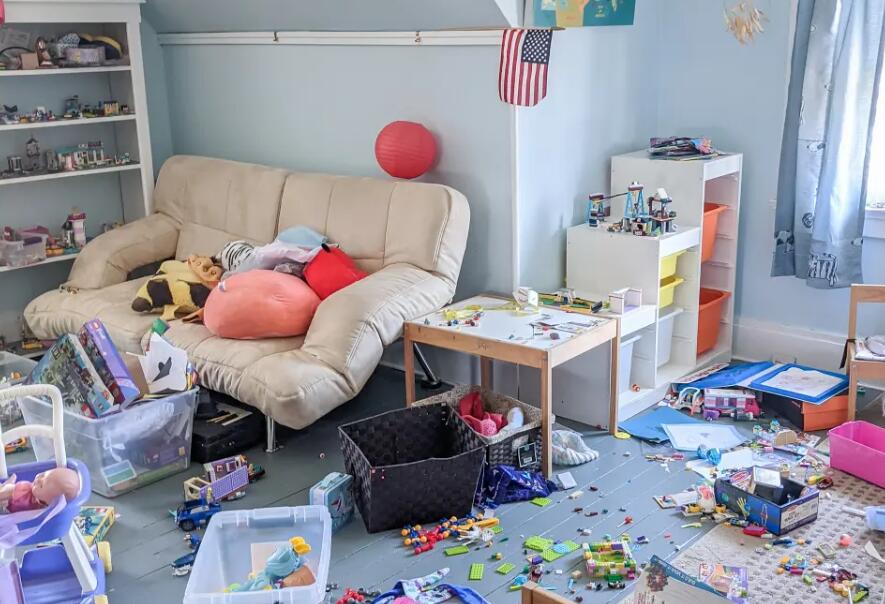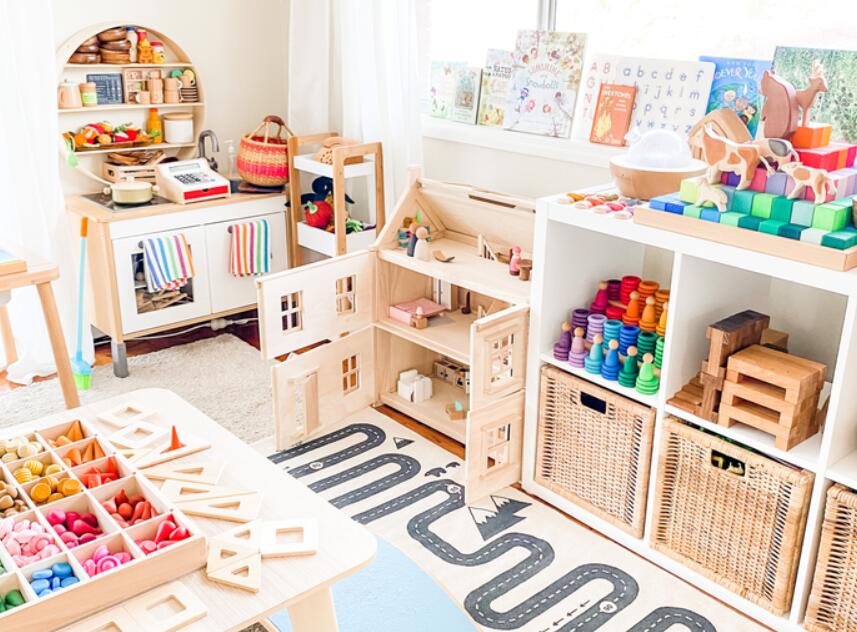Playtime is more than just fun and games for children; it is a crucial component of their overall development. It is through play that they learn about the world around them, develop problem-solving skills, and explore their imagination. However, one common challenge that many parents face is effectively organizing their children’s toys and play areas.
A well-organized space can enhance a child’s ability to focus, encourage independent play, and nurture their creativity and imagination. With this in mind, let’s explore the strategies and techniques for organizing kids’ toys and play areas effectively.
The Psychology Behind Effective Toy Organization
It may seem like a never-ending task, but organizing kids’ toys goes beyond mere tidiness. Studies have shown that cluttered spaces can negatively impact a child’s cognitive development and emotional well-being. An environment filled with too many toys can overwhelm a child, making it challenging for them to engage in meaningful play.
In contrast, an organized play area with clear boundaries and designated spaces for toys can promote a sense of order and calmness, enhancing a child’s ability to focus and explore their creativity.
One concept that strikes a balance in organizing kids’ toys is organized chaos. This approach acknowledges the importance of structure while also allowing for creative freedom.
By creating a system that categorizes toys and provides easy access, children can independently navigate their play space while still feeling a sense of order. The key is to find a balance that promotes both organization and spontaneity, fostering an environment where children can freely express themselves and explore their interests.
Benefits of Teaching Tidiness and Responsibility
Teaching children the value of tidiness and responsibility through organizing their play areas is a valuable life lesson. By involving children in the process, parents can instill a sense of ownership and pride, empowering them to take responsibility for their belongings.
This not only promotes independence and self-sufficiency but also teaches children essential organizational and problem-solving skills that will serve them well in their future endeavors.
In addition to the practical benefits, organized play areas also contribute to a child’s emotional well-being. When children know where their toys belong and can easily access them, they experience a sense of control and security.
This sense of order can reduce stress, anxiety, and frustration, allowing children to fully immerse themselves in play and unleash their creativity without unnecessary distractions.
Strategies for Efficient Toy Organization
Purging and Sorting
One of the first steps in organizing kids’ toys is to declutter and purge items that are no longer used or broken. Start by taking inventory of all the toys and identifying those that have been outgrown or are no longer of interest to your child.
Donate these toys to charity or pass them on to friends or family members with younger children. Discard any toys that are broken or missing essential pieces, as they can only contribute to the clutter. By purging unnecessary items, you create space for the toys that truly engage and inspire your child.
After decluttering, it’s time to sort the remaining toys. Categorize them based on age appropriateness, themes, and frequency of use. This organization method allows for easy accessibility and ensures that toys are readily available when desired.
Consider using labeled bins or baskets to keep categories distinct and visually appealing. Involve your child in the sorting process, as it helps them learn about classification and decision-making skills. Additionally, it empowers them to take an active role in maintaining and organizing their own toys.
Creating Zones
Instead of letting toys seep into every corner of your home, creating activity-based zones can help organize and maximize playtime engagement. Designate specific areas for different types of play, such as arts and crafts, building blocks, pretend play, and quiet reading.
This level of organization not only keeps the play area tidy but also encourages children to engage in different types of play, fostering a well-rounded development. Use colorful rugs, floor cushions, or even tape outlines on the floor to physically define these zones and make them visually appealing to your child.
When designing the play zones, consider the interests and preferences of your child. For example, if your child loves outdoor adventures, create a designated area for camping or exploration with play tents, binoculars, and camping gear.
If they have a passion for artistic expression, set up an arts and crafts zone equipped with an easel, paint sets, and crafting materials. By tailoring the play spaces to your child’s interests, you cultivate an environment that sparks their imagination and encourages them to explore their passions.
Innovative Storage Solutions
Once you have purged, sorted, and designated play zones, it’s time to find storage solutions that are practical, accessible, and visually appealing. Labeled bins or baskets are a popular choice for organizing and containing toys.
Clear containers work well, as they allow children to see what’s inside without needing to pull everything out. Consider stackable containers to save space and make the most of vertical storage. Utilize wall-mounted organizers such as shelves, hooks, or hanging baskets to maximize space and keep frequently used toys within reach.
Make the storage solutions part of the play area’s aesthetic appeal by utilizing fun and colorful containers. This can enhance the visual appeal of the space and make it more inviting for your child.
Encourage your child to participate in the organization by decorating labels or personalized signs to attach to the bins. This not only adds a personal touch to the play area but also reinforces the idea that organizing can be a creative and enjoyable activity.
Rotating and Refreshing
To avoid playtime monotony and keep children engaged, consider implementing a toy rotation system. Instead of having all toys accessible at once, store a portion of the toys away and periodically swap them with the ones currently in use.
This technique helps maintain your child’s interest and excitement, as they will rediscover toys they haven’t played with in a while. Additionally, it prevents overwhelming clutter and ensures that all toys receive equal attention and appreciation.
Alongside toy rotation, periodically refreshing the play areas can invigorate your child’s creativity and imagination. Rearrange the layout of the play zones, introduce new props or accessories, or create themed play scenarios.
For example, transform the arts and crafts zone into a mini art gallery or set up a pretend play scenario inspired by your child’s favorite storybook. By infusing novelty into the play areas, you encourage your child to explore and imagine, keeping their playtime experience engaging and exciting.
Engaging Kids in the Organizing Process
Getting children involved in the organizing process is not only an opportunity to teach them valuable life skills but also a way to nurture their sense of responsibility and ownership. Start by explaining the importance of keeping toys organized and the benefits it brings to their playtime experience.
Encourage them to actively participate in sorting toys, labeling bins, and arranging their play areas. By involving them in decision-making and providing them with age-appropriate tasks, you empower them to take ownership of their space and belongings.
Make organizing a fun and interactive activity by turning it into a game or a challenge. Set a timer and see how quickly your child can sort their toys into the respective bins. Create a rewards system for achieving organizational goals or completing tasks.
For example, they can earn stickers or small treats for keeping their play area tidy for a certain period of time. By making organizing enjoyable, you instill a positive association with the process and motivate your child to maintain order in their play space.
Sustainable Toy Organization
As we strive to create a better world for future generations, it’s important to consider the environmental impact of our organizing practices. When organizing kids’ toys, opt for sustainable solutions that minimize waste and promote sustainability.
Reduce the use of single-use plastic storage options and instead choose eco-friendly alternatives. For example, repurpose cardboard boxes or use fabric bins made from recycled materials. Encourage your child to actively participate in recycling efforts by teaching them about the importance of minimizing waste and repurposing materials whenever possible.
Embrace the concept of upcycling by transforming everyday items into creative storage solutions. Use mason jars to hold small toys or repurpose shoe organizers to store art supplies. Engage your child in DIY projects to create personalized and environmentally friendly storage options. This not only reduces waste but also encourages creativity and resourcefulness.
Conclusion
Throughout this article, we have explored the art of organizing kids’ toys and play areas effectively. We have delved into the psychology behind effective toy organization, understanding the benefits it brings to a child’s cognitive and emotional development. By creating organized spaces that strike a balance between structure and creative freedom, children can thrive in their playtime experiences.


